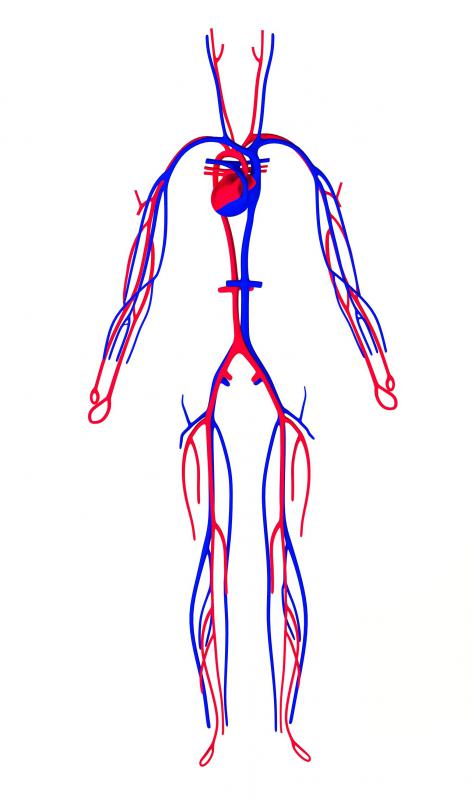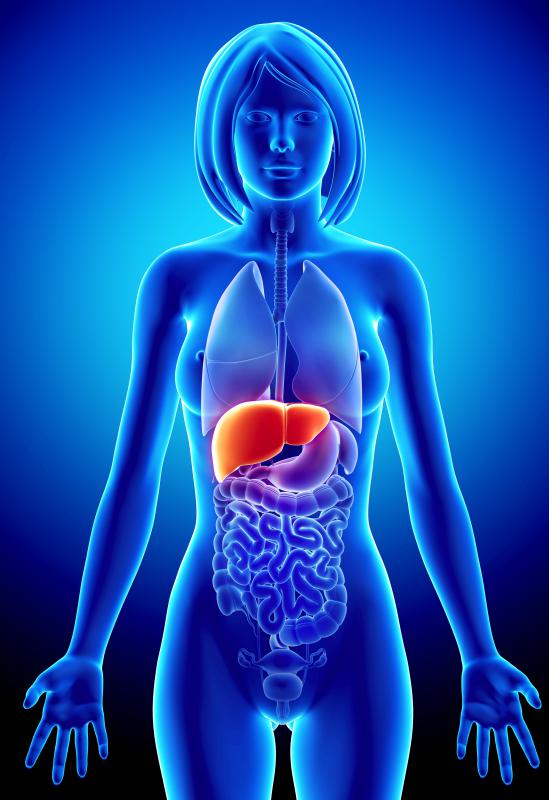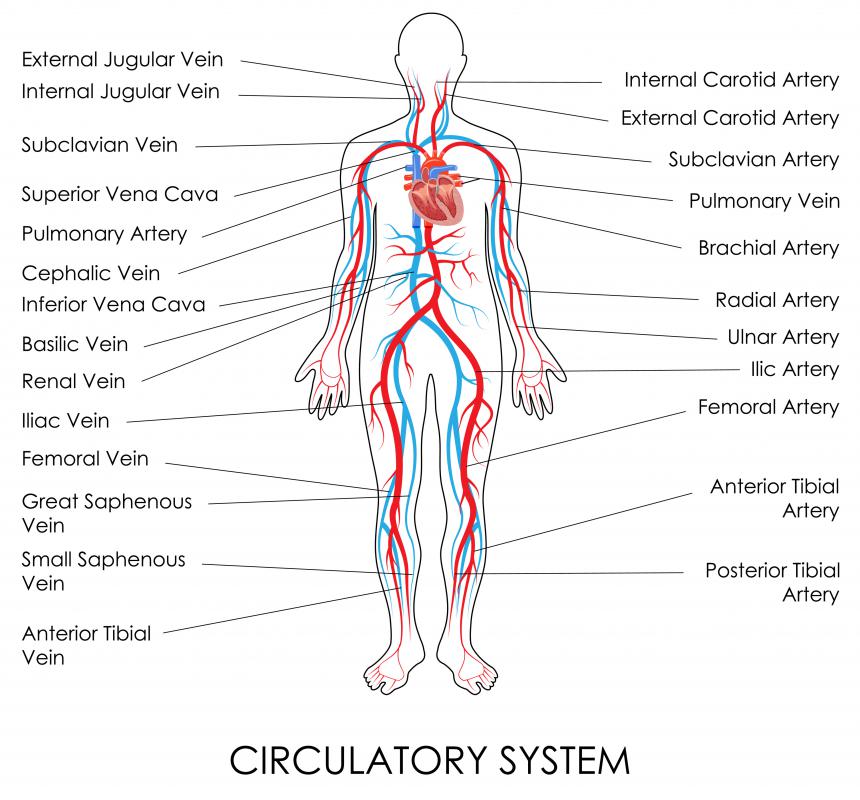At TheHealthBoard, we're committed to delivering accurate, trustworthy information. Our expert-authored content is rigorously fact-checked and sourced from credible authorities. Discover how we uphold the highest standards in providing you with reliable knowledge.
What is a Capillary Bed?
A capillary bed is a concentration of capillaries which supply blood to a specific organ or area of the body. The density of the capillaries in a given bed can vary, depending on the requirements of the area it supports. These areas are an important part of the circulatory system, marking the point where the circulation reaches its terminus and loops back around to allow blood to pass through the heart and become reoxygenated so that it can return to circulation.
The capillaries are the smallest unit of the circulatory system, connecting the arterioles and the venules. Arterioles bring blood from the heart which is rich with oxygen and nutrients, while venules carry blood which has become deoxygenated back to the heart. In any given day, the blood circulates numerous times throughout the circulatory system to supply the body's cells with the necessary oxygen and nutrients.

At the capillary bed, fresh blood drops off water, oxygen and nutrients, collecting waste materials such as carbon dioxide from the cells so that they can be expressed from the body. Although the circulatory system may seem like a closed network of tubes, the capillaries are actually permeable, allowing substances to pass into and out of the capillary across a thin membrane. In organs with heavy nutrient and oxygen requirements, such as the liver, the capillary bed may be quite extensive, because at any given time it usually holds around 25% of the blood which it can contain.

Sometimes, the capillary bed is clearly visible. The bed under the fingernails is an excellent example. Normally, the fingernails appear slightly flushed, due to the blood circulating beneath them. If gentle pressure is exerted on the nail, it will blanch white for a moment before blood flows back into the capillary bed, allowing the nail to regain its normal flushed hue. This reaction can be used to assess circulatory system health; if it takes a long time for blood to return to the nail, it can indicate that someone has a circulatory system problem. Likewise, if the fingertips turn blue, it means that the blood is not circulating properly, and that deoxygenated blood is pooling in the nails.

Prolonged lack of circulation can lead to serious complications, as waste materials will build up with no method of disposal. The cells around the capillary bed can eventually die to lack of fresh nutrients and a buildup of waste, resulting in necrosis. If the tissue death is extensive, it can result in the need for amputation or excision, as when people develop severe frostbite and lose toes.
AS FEATURED ON:
AS FEATURED ON:
















Discussion Comments
@Sobeit - It sounds like you're already doing the right things for your circulation if you live a healthy lifestyle. It isn't hard to increase your circulation if you exercise at least 30 minutes every day. And you can break that up into 10 minute segments to increase blood flow. Short walks, jump rope, bike riding, deep breathing through yoga are all good options for busy people.
There are plenty more ideas but I'm sure your capillaries will thank you for upping your exercise and deep breathing!
Is there something specific we can do to increase circulation health naturally? I do follow a healthy lifestyle, but would like to know more about revving up my circulation (and capillary bed function).
I didn't realize how important it is (or should be) to go without nail polish once in a while so we can check our own circulatory health.
Thanks for the cool tip on how to use our fingernails to see if our blood is circulating efficiently.
Post your comments